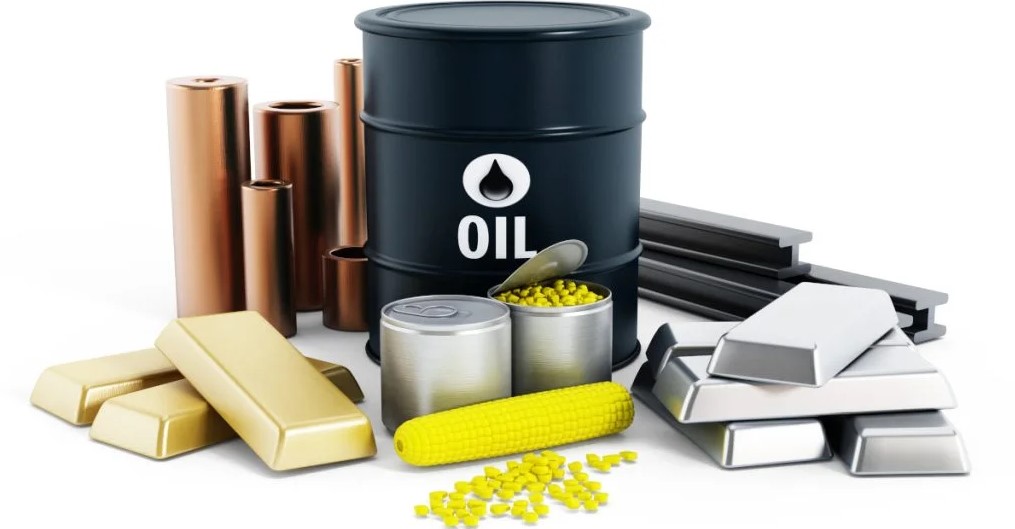The first time I ever visited Zimbabwe in late 2010, the country was barely one year removed from the end of its legendary hyperinflation.
Hyperinflation in Zimbabwe had become so extreme– roughly 90 billion trillion percent (that’s not a misprint)– that the government finally capitulated in 2009 and simply abandoned the currency altogether.
And when I first landed in the capital of Harare, the infamous Zimbabwe dollar had become so worthless that many people were using it for wallpaper.
Zimbabwe had once been a vibrant, highly productive economy based on valuable mineral and agricultural exports. Even by the early 2000s, after two decades of independence under Robert Mugabe, inflation was still ‘only’ around 20%.
But inflation began to spiral out of control.
There was no end to Mugabe’s bad policy ideas, ranging from price fixing to land reform. And after confiscating assets from citizens in the late 90s and early 2000s, Zimbabwe’s economy contracted viciously.
If that weren’t enough, Mugabe also ballooned government spending. He borrowed heavily and increased Zimbabwe’s national debt. So naturally, the central bank began printing vast quantities of money.
We all know what happened next; Zimbabwe’s economy was in the dumps, so fewer goods and services were being produced. Yet the central bank created substantially more paper money. So inflation soared.
By 2003 it reached nearly 600%. By 2006, over 1,000%. And yes, by November 2008, 90 billion trillion percent.
Activist Post is Google-Free — We Need Your Support
Contribute Just $1 Per Month at Patreon or SubscribeStar
Most of us from developed countries can’t imagine the living conditions of a collapsed economy. And the locals I met in Harare told me incredible stories of food shortages and endless lines at banks, grocery stores, and pharmacies.
If you were lucky enough to be inside of a store where there was actually food on the shelves, workers were constantly putting new price tags on products. And while you were shopping, a voice would come over the loudspeaker and announce the new price of soup, bananas, and rice.
Everything was a constant rush. You had to race through the aisles to grab whatever you could, and check out before the prices went up.
It was the same at restaurants; several times during a meal, a waiter would come out and inform you about the new price of the beer you were drinking.
I remember one person told me that he used to buy two loaves of bread every morning on his way to work. He would eat one of the loaves during the day, and then sell the second loaf in the evening at a significantly higher price.
He realized that bread, bizarrely enough, held its value– at least for the day. It was also a highly ‘liquid’ asset; he would always able to quickly find a buyer and sell his extra loaf at market value.
It’s not hard to understand why: bread has a real use in that it provides critical nourishment. And in a time of economic chaos and shortages, this is far more valuable than rapidly deteriorating paper currency.
The same logic applies to “real assets”, i.e. they hold their value during inflationary times because they provide something vital. And this is a key point to understand.
Think about consumer behavior: during economic boom periods, inflation is low. Unemployment is low. Interest rates are low. People have confidence and optimism about the future, so we tend to borrow more and spend more freely.
And the best performing assets during these boom periods mirror that sentiment.
Just think about the economic boom period from, say, 2016 through 2021. Unemployment, inflation, and interest rates were all at historic lows. Consumer spending soared.
And the most valuable companies in the world were the so-called “FAANG” stocks:
– Facebook, which just enables people to waste time swiping and scrolling
– Apple, which makes the devices for people to swipe and scroll
– Amazon, which makes it easy to shop and spend money
– Netflix, which is basically just an entertainment business
– Google, whose YouTube division is another entertainment business
In other words, the world’s most valuable companies were all consumer-oriented… and even more specifically, oriented towards shopping, recreation, and entertainment.
Over the same period, companies who produced some of the world’s most essential products were ignored.
Facebook stock soared nearly 500% between 2014 and 2019. Yet shares of Exxon Mobil lost about 10%. Netflix stock exploded more than 1,000%, while an ETF of gold miners lost 21%.
But today’s harder economic times are forcing changes in people’s focus and behavior. It’s only natural.
Most people have started paying a lot more attention to their expenditures. Spending $2,000 on a new iPhone suddenly doesn’t seem like such a great idea when oil is approaching $100/barrel.
And this is what leads me back to real assets. But first let’s define what that actually means–
“Real Assets” are defined in a variety of different ways. Sometimes people define real assets by citing specific asset classes, i.e. commodities and real estate. ChatGPT tells me that a real asset “is a tangible physical asset that has intrinsic value due to its substance and properties.”
I think these definitions miss the point. To me, a real asset is something that provides a critical need, like food, energy, economic productivity, or a store of value.
This could be a tangible, physical asset, like a barrel of oil or bushel of corn. But not necessarily.
Productive technology that makes the world better, faster, cheaper, etc. is considered intangible intellectual property. But it provides a critical need, which makes it a real asset.
Conversely, Mark Zuckerberg’s new “Threads” app is also technology. But given that it makes the world less productive, it is not a real asset. It’s just another recreation asset.
Similarly, 500 acres of prized, high-quality farmland provides critical value. But a Class C office building in a declining tier-3 city does not.
Viewed through this lens of “critical need”, it’s a lot easier to understand what is/isn’t a real asset… and why they can hold their value during inflationary times: it’s all about shifting priorities.
Real assets (including real asset businesses) have been largely ignored for more than a decade, in favor of ‘recreation assets’ focused on shopping and consumption.
Consider that, in 2019, a ripe banana that was duct-taped to the wall sold for $120,000 at an art exhibition. Critical need? Hardly.
Meanwhile, that same year, the high priests of climate change (like Blackrock’s Larry Fink) were working diligently to cut-off funding for vital industries like oil, coal, and natural gas.
And this bizarre mismatch of priorities continued for years, through at least the first half of 2022;
But priorities are finally starting to shift. And this means that the ‘real assets’ which are critical to solving the world’s challenges will become much more important than ‘recreation assets’. And that’s what makes them such a great hedge against inflation.
PS: If you can see what is happening, and where this is all going, you understand why it is so important to have a Plan B. That’s why we published our 31-page, fully updated Perfect Plan B Guide, which you can download here.
Inside you’ll discover…
No-Brainer Strategies to Ensure You Thrive
No Matter What Happens Next.

Learn how to:
– This vital 31-page report is absolutely free.
Simon Black, as James Hickman is more commonly known, is the Founder of Sovereign Man.
He is an international investor, entrepreneur, and a free man. His daily e-letter, Sovereign Letters, draws on his life, business and travel experiences to help readers gain more freedom, more opportunity, and more prosperity.
Become a Patron!
Or support us at SubscribeStar
Donate cryptocurrency HERE
Subscribe to Activist Post for truth, peace, and freedom news. Follow us on SoMee, Telegram, HIVE, Flote, Minds, MeWe, Twitter, Gab, and What Really Happened.
Provide, Protect and Profit from what’s coming! Get a free issue of Counter Markets today.


Be the first to comment on "Why Real Assets Are a Safe Haven Against Inflation"